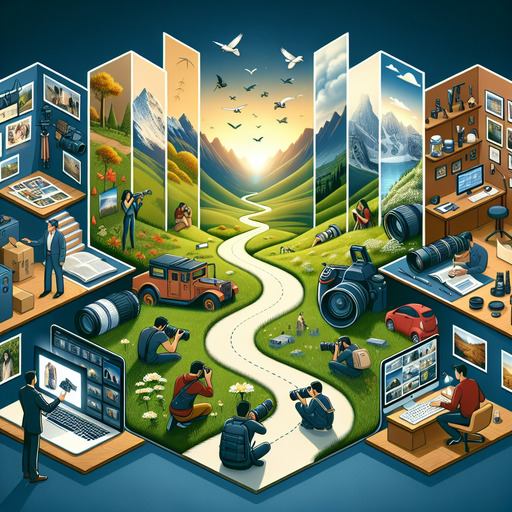
-
Table of Contents
- Mastering Photography: Tips and Techniques for Stunning Shots
- Understanding the Basics of Photography
- Why Mastering the Basics Matters
- Advanced Photography Techniques
- Portrait Photography: Capturing Emotions
- Landscape Photography: Embracing Nature’s Beauty
- Editing and Post-Processing
- Enhancing Your Images
- Choosing the Right Photography Gear
- Investing in Quality Equipment
- Building a Photography Business
- Turning Passion into Profession
- Conclusion
- Questions and Answers
Mastering Photography: Tips and Techniques for Stunning Shots
Photography is more than just capturing moments; it’s about telling stories through images. Whether you’re a budding photographer or a seasoned professional, understanding the nuances of photography can elevate your work to new heights. In this guide, we’ll explore essential photography tips, techniques, and insights to help you capture breathtaking images.
Understanding the Basics of Photography
Why Mastering the Basics Matters
Before diving into advanced techniques, it’s crucial to have a solid grasp of the fundamentals. Understanding the basics allows you to make informed decisions about composition, lighting, and camera settings.
- Exposure: Learn the exposure triangle—aperture, shutter speed, and ISO—to control the amount of light entering your camera.
- Composition: Use the rule of thirds, leading lines, and framing to create visually appealing images.
- Focus: Master autofocus and manual focus to ensure your subjects are sharp and clear.
Advanced Photography Techniques
Portrait Photography: Capturing Emotions
Portrait photography is about capturing the essence of a person. To create compelling portraits, consider the following techniques:
- Lighting: Use natural light or softbox lighting to highlight your subject’s features.
- Background: Choose a simple background to keep the focus on the subject.
- Posing: Guide your subject into natural poses to convey emotion and personality.
Landscape Photography: Embracing Nature’s Beauty
Landscape photography requires patience and an eye for detail. Here are some tips to enhance your landscape shots:
- Golden Hour: Shoot during the golden hour for soft, warm lighting.
- Depth: Use foreground elements to add depth and dimension to your images.
- Perspective: Experiment with different angles and perspectives to create unique compositions.
Editing and Post-Processing
Enhancing Your Images
Editing is a crucial step in the photography process. It allows you to refine your images and bring your creative vision to life.
- Software: Use tools like Adobe Lightroom or Photoshop for professional editing.
- Color Correction: Adjust colors to enhance the mood and tone of your images.
- Retouching: Remove blemishes and imperfections for a polished look.
Choosing the Right Photography Gear
Investing in Quality Equipment
Having the right gear can make a significant difference in your photography. Consider the following when selecting equipment:
- Cameras: Choose a camera that suits your style and needs, whether it’s a DSLR, mirrorless, or compact camera.
- Lenses: Invest in versatile lenses that allow you to capture a range of subjects and scenes.
- Accessories: Use tripods, filters, and external flashes to enhance your photography.
Building a Photography Business
Turning Passion into Profession
For those looking to turn their passion into a career, building a photography business requires dedication and strategy.
- Portfolio: Create a diverse portfolio showcasing your best work.
- Marketing: Use social media and online platforms to reach potential clients.
- Networking: Connect with other professionals and attend photography events to grow your network.
Conclusion
Photography is a journey of continuous learning and exploration. By mastering the basics, experimenting with advanced techniques, and investing in quality gear, you can capture stunning images that tell powerful stories. Whether you’re pursuing photography as a hobby or a profession, these tips and insights will guide you on your path to success.
For more information on photography techniques and tips, visit Wikipedia’s Photography Page.
Questions and Answers
Q1: What is the best time of day for landscape photography?
A1: The best time for landscape photography is during the golden hour, which occurs shortly after sunrise and before sunset. The soft, warm lighting during this time enhances the natural beauty of landscapes.
Q2: How can I improve my portrait photography skills?
A2: To improve your portrait photography skills, focus on lighting, posing, and composition. Experiment with different lighting setups, guide your subjects into natural poses, and use composition techniques like the rule of thirds to create engaging portraits.
Q3: What essential gear should a beginner photographer invest in?
A3: Beginner photographers should invest in a reliable camera, a versatile lens, and a sturdy tripod. These essentials will provide a solid foundation for capturing a variety of subjects and scenes.
If you’re interested in learning more about our photography services or have any questions, please contact us.